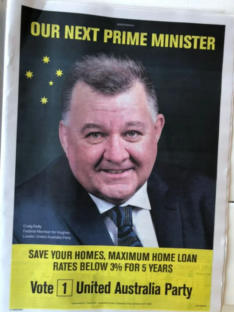What did Clive Palmer get for his $100m ad splurge?
Since mid-2021, Australia’s media companies have been awash with ads for Clive Palmer and his United Australia Party. But in the wake of Saturday’s Election poll Mumbrella’s Calum Jaspan looks at how the “most expensive campaign in history” was spent and what, if anything, the media strategy achieved.
After claiming he was set to run Australia’s most expensive ever campaign, there has been a wave of commentary in recent days about how Clive Palmer’s United Australia Party spectacularly flopped at this year’s election.
Estimates of a spend anywhere between $70-$100 million being pumped into the UAP’s campaign advertising this time around ended up winning zero seats, lost Craig Kelly’s Hughes seat, and failed to ensure the ALP was kept out of government.

Full page pull-out newspaper ad last week


The colour “yellow” should sue for defamation.
Looking forward to seeing the agencies behind the UAP work present it as a case study in their next pitch, or perhaps enter it into the next Effie Awards.
I’m no fan of them, but why does this neglect to mention that they are probably going to get a Senate seat in Vic?
Even if that were correct, which isn’t likely unless they trip over the line via Liberal Party preferences, Clive would’ve spent $100m for 1 seat in a senate where they’ll be rendered irrelevant by a Lbor/Greens/independent majority of Labor, Greens and independent senators with a completely opposite agenda and set of values.
@Darren Woolley,
Hilarious. Did they actually use an agency?
Yes, Rapid Media in Brisbane booked their media.
The only people who will miss this absurd amount of money spent will be tv and print. Gee, sorry
Great article, thank you!
Sad…just imagine what good could been done if the money ($100 million) was used for something useful (eg public schools) instead of advertising…